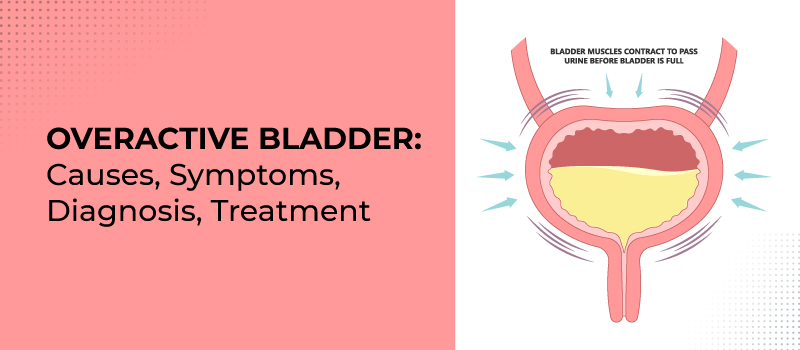OVERACTIVE BLADDER: Causes, Symptoms, Diagnosis, Treatment
Asian Institute of Nephrology and Urology | February 12, 2024

Table Of Contents
OVERACTIVE BLADDER: Causes, Symptoms, Diagnosis, Treatment
Overactive Bladder (OAB) is a very commonly encountered urological condition. The causes for OAB are quite diverse, identifying the cause forms one of the mainstays of treatment. The symptoms of OAB can impair one’s Quality Of Life. Insight into one’s symptoms and seeking appropriate medical attention forms a very important part of the overall management.
Causes of Overactive Bladder:
- The causes for OAB are numerous. Some of the common causes that are routinely seen
are,
- Overweight
- Elderly age group
- Post-menopausal state
- Urinary tract infections
- Benign enlargement of prostate
Symptoms of Overactive Bladder:
It is often challenging to know for oneself that the urinary symptoms are that of OAB. It is often ignored and being attributed to progressing age. Common symptoms of OAB are,
- Frequent urination: uncontrollable and frequent feeling to urinate. A constant or frequent feeling the need to empty the bladder despite the last urination was just few minutes ago
- Urgency : sudden urgency to urinate
- Disturbed sleep resulting from frequent urination at night
Treatment of OveractiveBladder:
Before the treatment is initiated, a sincere attempt to establish the diagnosis is very crucial. OAB in the setting of some underlying cause requires comprehensive approach for the treatment. However, based on the merit of every case, some of the below investigations namely Urine Analysis, Ultrasound, Uroflowmetry / Urodynamics or Cystoscopy may be warranted.
Lifestyle modifications form an essential part of the managing a case of OAB. Physiotherapy and Pelvic floor muscle exercises are also important tools for the treatment. OAB requires holistic approach for treatment and no treatment in isolation would give long-lasting results. The treatment comprises of the following,
- Behavioural therapy – in the form of bio-feedback therapy
- Pelvic floor exercises / Kegel’s exercises – it helps strengthen the muscles of the pelvic floor
- Body weight management
- Medications – one has to consult a specialist in order to decide the correct line of management
While it is a fairly common ailment, it doesn’t pose any life threatening risks. It is very crucial to identify the symptoms at very early stage as progression can result in irreversible changes in the bladder. Timely consultation with Urologist and seeking medical attention would prevent progression of OAB.







